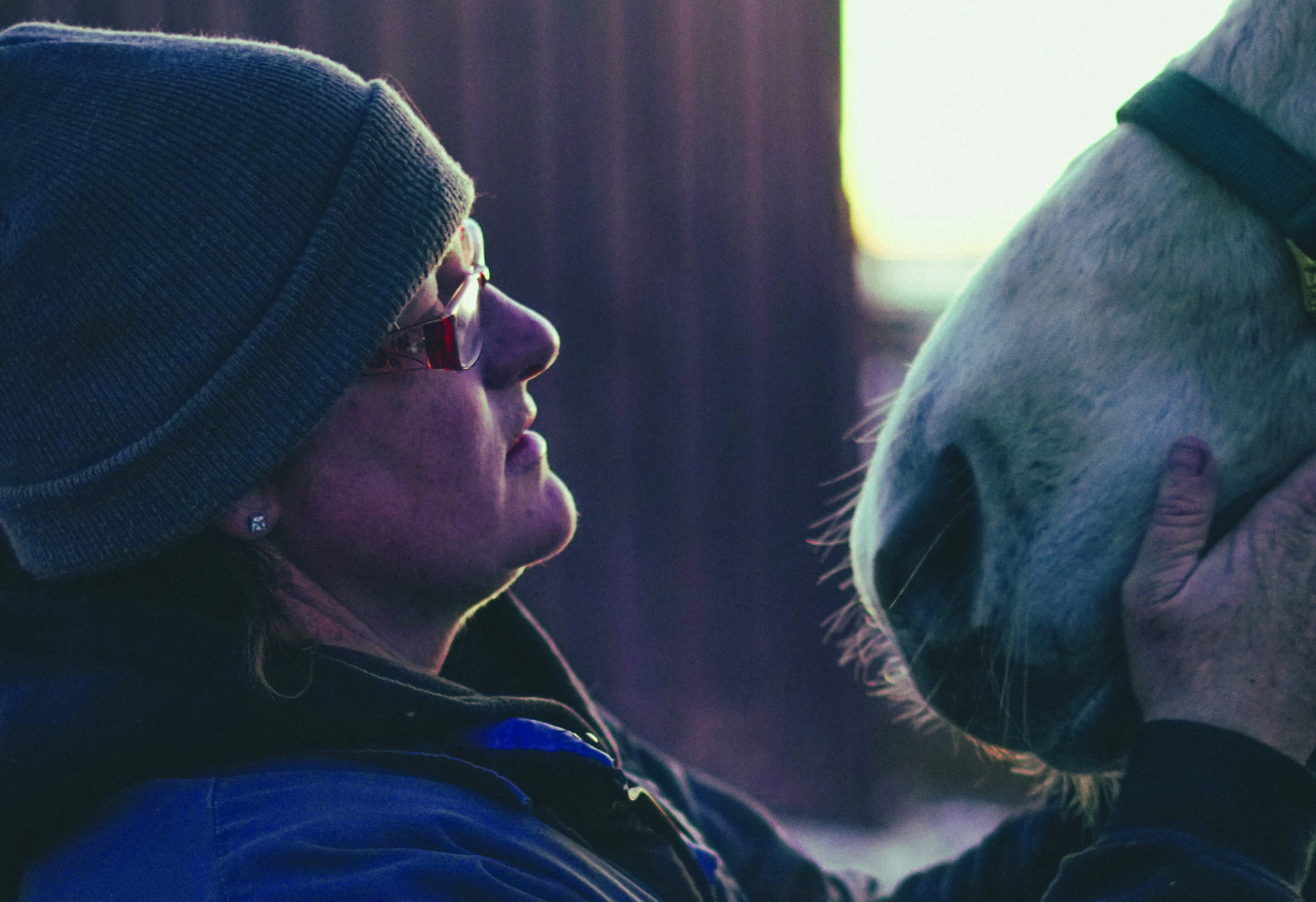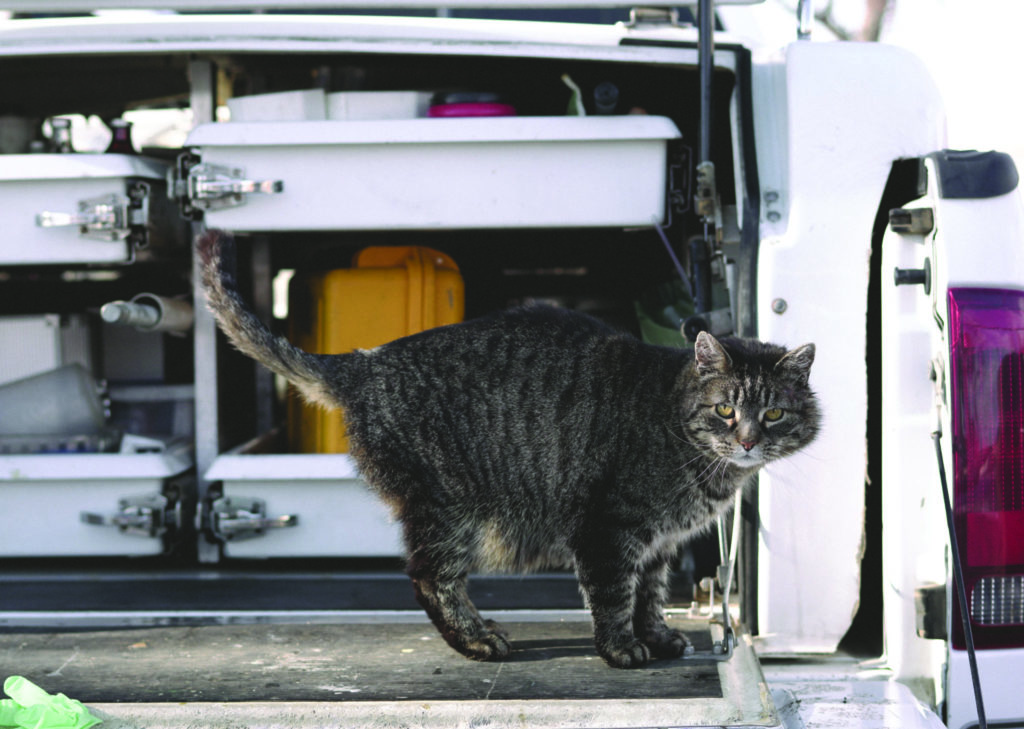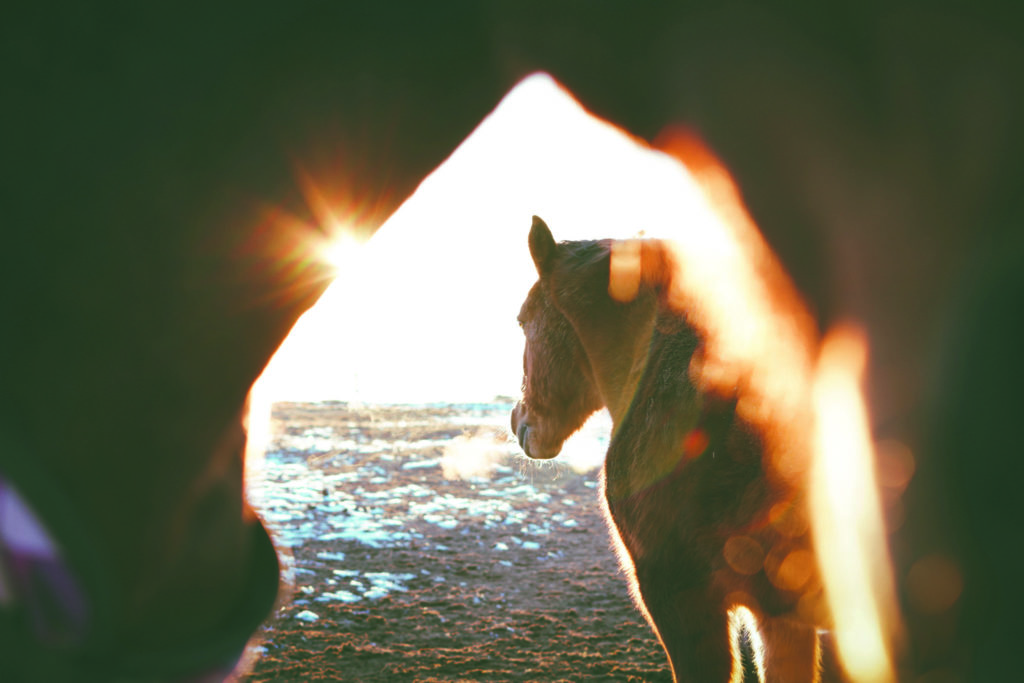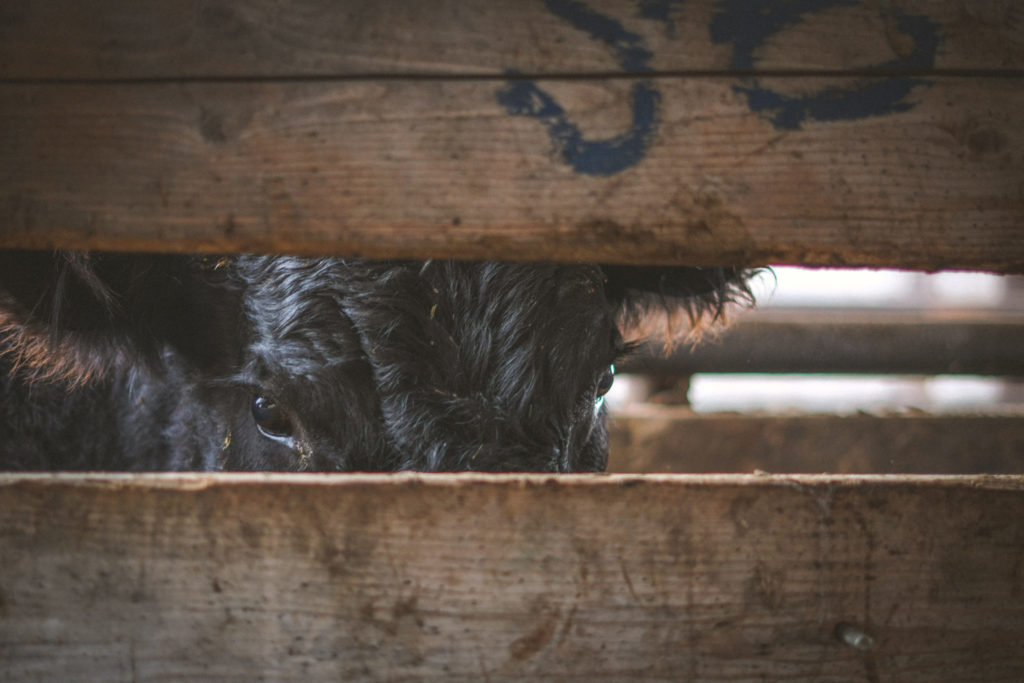Field Notes
The Evolution of Colorado's Country VeterinarianBy Jessica Cox
Photos by Chase Baker
For many aspiring rural veterinarians, “living the dream” may look like a James Herriot tale: The only veterinarian in the county cares for all creatures great and small. They run a mixed-animal practice from a brick-and-mortar clinic on Main Street, and have plenty of time for house and farm calls.
But if veterinarians-to-be imagine a country career full of charm and nostalgia, they soon discover an altogether different reality. Today’s country veterinarian depends on reputation and adaptability to turn dreams into livelihood.
Reputation: Where fit meets grit
If a rural community doesn’t trust a veterinarian, then vocational success is unlikely.
“Part of building reputation and credibility in a community is developing relationships,” said Dr. Hannah Klein (D.V.M., ’11). “The community has to support the vet, both in business and as a community member.”
Klein is a food animal veterinarian and a coach for the Colorado Veterinary Medical Association’s Power of 10, a leadership training program that teaches personal and professional development concepts to recent veterinary graduates. She believes new rural veterinarians have to build trust with current and prospective clients to succeed.
Dr. Kayla Henderson (D.V.M., ’12), co-owner of Alpine Veterinary Hospital in Monte Vista, is a Power of 10 grad who sees firsthand the positive impact of earning trust.
“Clients want to work with a vet who has been there at least a few years, someone who understands what their goals are,” Henderson said. “If you move around a lot, especially in a rural setting, it’s going to be hard to earn their trust.”
I think a rural veterinarian is a big part of the community. That’s how it was where I grew up. The vet was kind of everybody’s grandpa. I want to be that kind of veterinarian. – Kayle Austin
Because of the staying power required to succeed, the profession often attracts individuals who grew up in a rural area. Relationships with a community and familiarity with the rural lifestyle give prospective veterinarians a leg up while job searching. Rural veterinary medicine also typically attracts a certain type of person: someone with a passion for agriculture and a willingness to work hard.
Despite being one of the top three industries in Colorado, agriculture has experienced a downturn within the last decade, following a record-high net farm income of $1.8 billion in 2011. Cattle prices follow a similar trend, even as livestock continue to make up the largest share of the state’s agriculture economy. As farmers and ranchers struggle to turn a profit amid economic difficulties, access to quality veterinary care for their animals – from a dedicated and trusted provider – is increasingly important.
“You have to be passionate about the producers and ranchers you work for and what they’re doing for society, and you have to have grit,” Henderson said. “Our job is hard, and often we don’t get the luxury of self-reflection. We keep doing, keep going, because animals and livestock depend on you.”
Henderson is fortunate to own the mixed-animal practice in the same town in which she grew up, so her clients have known her for years and trust her expertise because they’ve witnessed it in action. Others spend time looking for the right fit. Because rural community members look for someone who’s going to put down roots, it’s a big decision for a veterinarian to commit to living in one place for an extended period of time.

Busting through the barn ceiling
Historically, rural veterinary medicine was dominated by men, but there are now far more women than men graduating from veterinary school, and they are challenging age-old stereotypes about country vets. Working with livestock is a physically demanding job, but what some veterinarians may lack in stature and muscle they make up for in creativity.
“I can’t muscle my way through situations. I have to think my way around them and come up with ‘work smarter, not harder’ solutions,” said Dr. Lora Bledsoe (D.V.M., ’13), owner of Bledsoe Mobile Vet. “But I’ve never been in a situation that made me think, ‘I can’t do this part of my job because I’m a woman.’”
Battling negative first impressions from certain clients can be annoying but, over time, clients come to understand that female veterinarians are just as capable and qualified as their male counterparts. “I once had a client with a cow who was having a hard time calving, and to his initial dismay he was stuck with me,” Henderson said. “My technician and I did a c-section on that cow, and really quickly. The client said, ‘three of my kids were c-sections and you did a better job on that cow than the doctor did on my wife.’”
Another challenge for veterinarians is maintaining work-life balance in an on-call world.
“Women have different pressures and expectations, and I don’t have a ‘stay-at-home husband,’” Bledsoe said. “Being honest and firm in boundaries you set up for your practice helps you keep your sanity.”
In a small town with familiar faces, the lines between personal and professional can become blurred. Boundaries are important for maintaining work-life balance, but the close-knit relationships often found in rural areas also allow for empathy among veterinarians and clients.
“Rural and large-animal veterinary medicine is more supportive of having family commitments because clients are already immersed in the natural cycle of life,” Klein said.

Taking it on the road
Instead of hanging a shingle in one location, some veterinarians forgo the financial overhead of a facility and bring their services to their clients. Klein, Bledsoe, and other CSU grads have responded to rural needs by opening mobile practices.
“I don’t see flexibility in traditional practices, and my life is not set up to be functional within an eight-to-five schedule,” Klein said. “Mobile is more flexible. I can be strategic in how and when I schedule clients.”
Bledsoe launched her business to serve a 7,300-square-mile area in eastern Colorado. Centrally located in Hugo, she drives her truck to a new base town each day to treat the 85,000 to 100,000 livestock animals in her care. A brick-and-mortar practice would limit accessibility because it would be more expensive for clients to travel to a stationary location. And, with a large-animal focus, Bledsoe doesn’t have to compete for small-animal clients.
The mobile model also works well for Dr. Kayle Austin (D.V.M., ’17), who started Austin Veterinary Services in a National Institute of Food and Agriculture-designated veterinarian shortage area. Driving approximately an hour and a half – one way – to reach her clients each day, Austin strives to make a local dent in addressing a national need for food supply veterinary medicine.
“I travel mostly to dairies and ranches and do farm calls,” Austin said. “If you’re dealing with a large animal and they’re not doing well, it’s harder on them to get transported than it is for me to go and treat them.”
Digging out of debt
Austin’s efforts have earned her recognition in the form of financial awards from state and national loan repayment programs. These programs aim to not only provide underserved areas with veterinary services, but also help ease the burden of student loan debt on rural veterinarians. The state and national loan repayment programs were created for good reason: There simply aren’t enough veterinarians to serve the rural areas that need them.
In 2018, the average debt for veterinary school graduates was $183,014. The national repayment program offers up to $75,000 for three years of service in high-priority veterinary shortage situations, while the state program provides up to $70,000 for four years of service. While the annual awards help address this problem, there are still new shortage situations declared each year.
Colorado State Veterinarian Dr. Keith Roehr believes that with the help of loan repayment programs and the passion of aspiring rural veterinarians, there are “pockets of potential” across the state. “Turnover and the graying of the veterinary profession open up opportunities,” Roehr said. “We want to encourage succession in practice and continuance of service in rural areas and celebrate those successes.”
But hands-on opportunities to learn the unique skills necessary to be successful as a rural large-animal veterinarian can be few and far between. There is a relatively low number of practicing rural large-animal vets compared to those working in urban areas or with small animals.
“There’s really not an internship for rural large-animal practice that is rural by nature,” said Sina Parsaye (D.V.M., ’15), owner of Parsaye Veterinary Services in LaPorte. “You need that mentorship piece to gain the skills, learn the clientele, and understand how the business model works in a rural area.”
An advocate of mentoring, Roehr believes it’s the Animal Health Division’s integral role to connect veterinarians in the field and help young graduates find positions when their interests align with industry need.
An appreciation for agriculture and understanding of small-town politics aren’t necessarily experiences that can be fostered through a veterinary school curriculum. In rural areas, soft skills such as communication and bedside manner, business acumen, and emotional intelligence are vastly different.
Recognizing the unique needs of rural populations, D.V.M. Program leadership strives to bridge the gap for students wanting to break into rural medicine. With the help of funding from the USDA Veterinary Services Grant Program, new opportunities are available to students that aid in understanding and addressing these needs. Recruitment of a financial education specialist and practice management expert help students effectively and lucratively run their business; Spanish language courses allow for improved communication between veterinarians and Spanish-speaking farm workers; and partnerships with food supply veterinarians and other medical professionals provide hands-on learning and mentorship. These efforts are part of a holistic approach intended to ensure students are well equipped to enter the rural workforce upon graduation.
Setting more realistic expectations in school and creating more robust mentorship opportunities for graduates can help newly minted rural veterinarians forge better client relationships, manage a profitable business, and overcome environmental challenges.
Word travels fast in a small town. With the right education, experience, and mindset, a veterinarian’s first rural interactions can help build – not break – their reputation.







